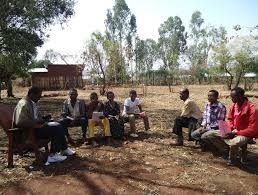The medieval city of Harar is among the major tourist sites in Ethiopia. The city is rich in terms of both tangible and intangible heritages. For instance, Jugol or Harar wall is the most famous historical places in the city which are frequently visited by foreigners and local tourists.
The fortified historic town of Harar is located in the eastern part of Ethiopia, 525 km from the capital of Addis Ababa, on a plateau with deep gorges surrounded by deserts and savannah. The walls surrounding this sacred city, considered “the fourth holy city” of Islam, were built between the 13th and 16th centuries and served as a protective barrier, according to UNESCO.
The old walled city of Harar is a colorful maze that begs exploration. Its thick, five-meters-high walls were erected in the 16th century as a defensive response to the neighboring Christian Ethiopian Empire, but today Muslims and Christians share the city in peace, testified Aljazeera.
Today, it is the capital of the Harari State, the smallest state in Ethiopia. In 2006, Harar was listed as a UNESCO World Heritage Site to highlight its unique and exceptional architecture, which captures the African and Islamic culture of its habitants, as to BBC.
UNESCO indicated there were five historic gates, which corresponded to the main roads to the town and also served to divide the city into five neighborhoods, but this division is not functional anymore. The Harar gate, from where the main streets lead to the center, is of recent construction.
According to documents from the Harari state, the inscribed property of Harar Jugol has a core zone of 48 hectares which encompass the entire walled city and contains all the attributes that sustain the Outstanding Universal Value of the property.
The buffer zone extends 800m to the south and 1,700m to the east whilst, on the west side, it is narrow and confined by the new town of Harar. Urban encroachment, on the western edge of the walled town, is the current concern.
Amir Nur built the wall, which had a traditional sewerage system that drains outside the city wall. He adopted the pragmatic policy of building a dependable wall and trenches contributed to the safety of Harar. And the formidable defensive shield that Amir Nur built has durably protected the Harari identity. It has also reduced it to a mainly urban phenomenon.
They have base outlets or circular opening ‘waraba nudulach’ (hyena outlets) to facilitate discharge of effluents and refuseby storm drainage, as well as passage for scavenging hyenas through the night.
The City, other than the numerous archaeological sites found in the Harar plateau, in the wider dimension, and the Jugol itself has numerous archaeological sites defined and situated in Geographical Position System (GPS). Among its other qualities, its rich architectural skill of its builders is reflected by the contour of the rampart’s resemblance of a person in a prostration.
Harar numbers 82 mosques, three of which date from the 10th century, 102 shrines and a number of traditional, Indian and combined townhouses with unique interior designs, which constitute a spectacular part of Harar’s cultural heritage. The African and Islamic traditions influenced over a long period of time the development of the city and its typical urban planning and contributed to its particular character and uniqueness.
The present urban layout follows the 16th-century design for an Islamic town with its central core occupied with commercial and religious buildings and a maze of narrow alleyways with imposing facades.
The traditional Harari house has a typical, specific and original architectural form, different from the domestic layout usually known in Muslim countries, although reminiscent of the coastal Arabarchitecture, and with exceptional interior design.
At the end of the 19th century, Indian merchants built new houses with wooden verandas that defined a different urban landscape and influenced the construction of the combined Indian/Harari houses. Their architectural and ornamental qualities are now part of the Harari cultural heritage.
The historic town, where a number of ethnic groups reside, has a traditionally functioning community, forming a complex social-environmental whole where each element has its symbolic and practical significance.
Although there has been some urban development towards the west and north parts, the historic city remains intact on the eastern and south-eastern part of the walled town where the essential relationship between the urban and rural areas is still maintained. Except for some changes that took place in the 19th and 20th centuries, the historic city has kept its traditional housing reasonably intact.
UNESCO hails Harar Jugol as a rare example of a relatively well preserved historic town that has retained its traditions, urban fabric, and rich Harari Muslim cultural heritage to the present time. It is one of the holy towns of Islam in Africa, and the capital of a minority region within Christian Ethiopia.
However, the integrity of the property can be threatened by emerging trends to alter and modernize the traditional buildings, which would make them susceptible to irreversible change. Careful monitoring, enforcement of regulations, raising awareness and the promotion of preservation attitudes amongst the inhabitants are actions needed to maintain integrity.
Inappropriate interventions, such as plastering the houses, changing doors from wood to metal, the introduction of non-traditional materials and visual impacts such as TV antennas have been gradually affecting the authenticity of the historic fabric. Guidelines for interventions need to be enforced and communicated amongst the inhabitants to prevent further impacts on the authenticity of the property, UNSECO noted.
In the center of a very beautiful and rich region of the Harar plateau, the principal city Harar still commands great economic importance, while its own history gives it a political value of the first order in Eastern Ethiopia. Few of these economic and professional works elsewhere had manifested the cultural level to emulate Hararis’ level of civilization. Harar had and still has several market areas.
The Ethiopian Herald August 29, 2019
BY ESSEYE MENGISTE







